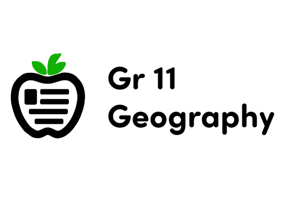Podcast
Questions and Answers
What type of map accurately shows distances and sizes of landscapes?
What type of map accurately shows distances and sizes of landscapes?
Topographic map
What type of map illustrates the relationship between the size of land and the size of data?
What type of map illustrates the relationship between the size of land and the size of data?
Cartogram
What type of map depicts variations in data through different color shades?
What type of map depicts variations in data through different color shades?
Choropleth map
What is the term for the horizontal grid lines on a map?
What is the term for the horizontal grid lines on a map?
What term refers to the alterations to land, atmosphere, and water due to human activities?
What term refers to the alterations to land, atmosphere, and water due to human activities?
What term describes engaging in activities outside the natural environment while prioritizing sustainability?
What term describes engaging in activities outside the natural environment while prioritizing sustainability?
Explain how the contour intervals on a topographic map can be used to determine the steepness of terrain.
Explain how the contour intervals on a topographic map can be used to determine the steepness of terrain.
Compare and contrast the human-centered and earth-centered environmental worldviews, and discuss how they might lead to different approaches to environmental protection and resource management.
Compare and contrast the human-centered and earth-centered environmental worldviews, and discuss how they might lead to different approaches to environmental protection and resource management.
Explain how the grid references on Australian Rectified (AR) maps and General Reference (GR) maps differ, and discuss the practical implications of these differences for map users.
Explain how the grid references on Australian Rectified (AR) maps and General Reference (GR) maps differ, and discuss the practical implications of these differences for map users.
Describe how a cartogram can be used to effectively illustrate the relationship between the size of land and the size of data, and discuss the advantages and limitations of this type of map compared to other map types.
Describe how a cartogram can be used to effectively illustrate the relationship between the size of land and the size of data, and discuss the advantages and limitations of this type of map compared to other map types.
Explain how the concepts of latitude and longitude are used to describe the location of geographic features on a map, and discuss the practical applications of this coordinate system in various contexts.
Explain how the concepts of latitude and longitude are used to describe the location of geographic features on a map, and discuss the practical applications of this coordinate system in various contexts.
Discuss the environmental changes that have occurred due to human activities, such as deforestation and urbanization, and explain how these changes have impacted the Earth's systems that support life, including the land, atmosphere, and water.
Discuss the environmental changes that have occurred due to human activities, such as deforestation and urbanization, and explain how these changes have impacted the Earth's systems that support life, including the land, atmosphere, and water.
Flashcards are hidden until you start studying




